
Renault Extends Standard Warranty On Kwid, Triber, And Kiger To 3...
- Dec 30, 2024
- Views : 30383

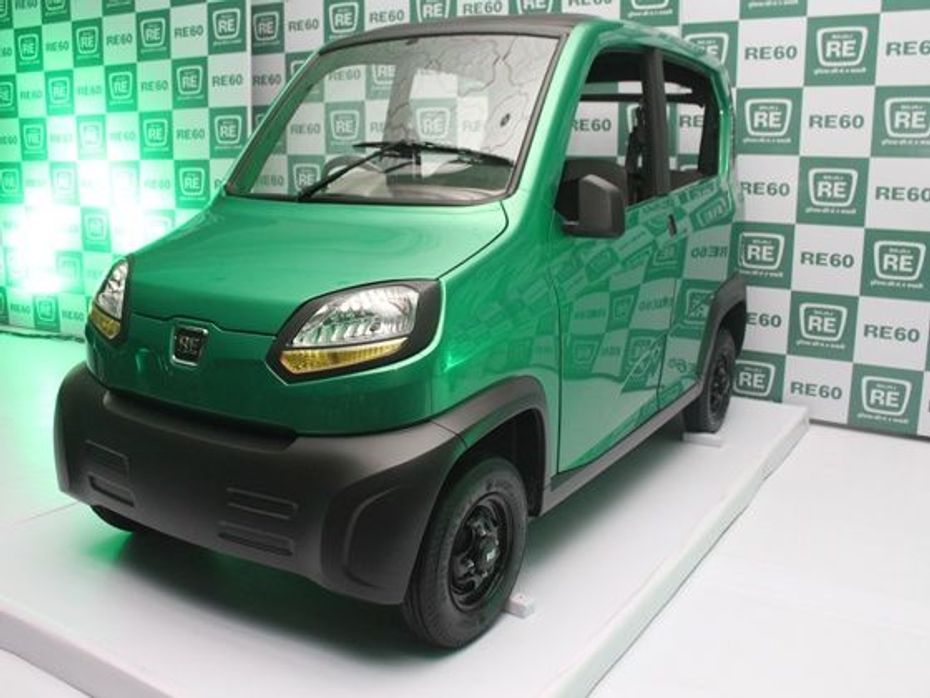
Four years after Bajaj Auto showcased its ‘small car’ at the 2008 Auto Expo, the two- and three-wheeler giant has unveiled what it calls the RE60. “It is not a car. It’s a four wheeler,” said Rajiv Bajaj while addressing the media during the unveiling of the vehicle at hotel Taj Palace in New Delhi. And that's as apt a way to put things as any.
There are two radical directions that the RE60 - a name that harks back to Bajaj Auto's range of Rear-Engine autorickshaws - pushes the boundaries of engineering and market positioning. It is a new advancement in last mile people movers on one hand, and a modern rethought urban mobility solution on the other. Sounds deep? Here are some questions that might crop up in your minds, and the answers that throw light on the true grit of this paradigm shift.
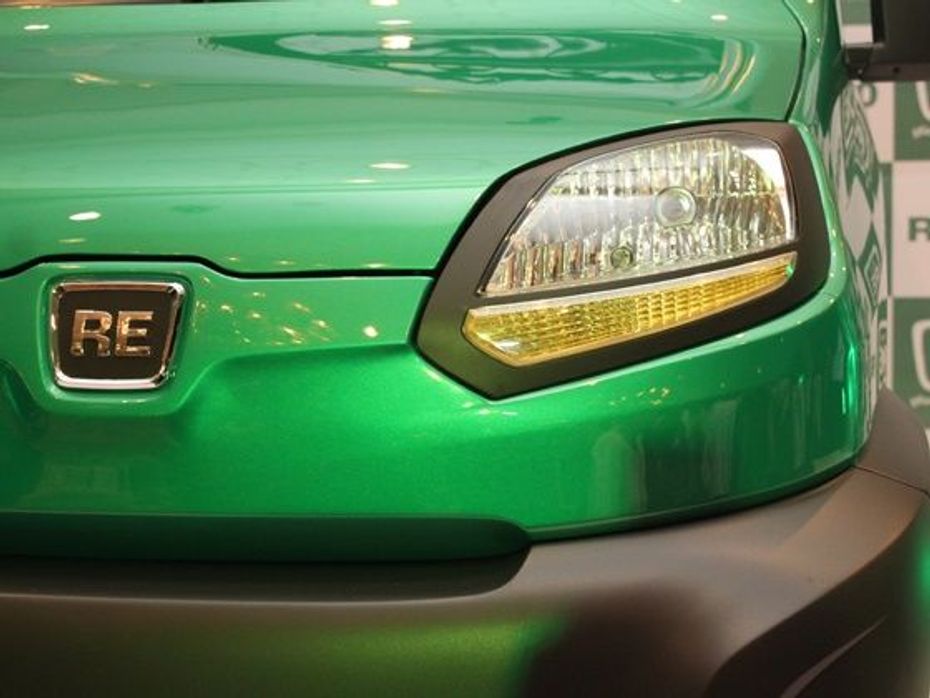
Q). Why the RE name?
It is part of Bajaj Auto’s product strategy where the products define the brand and the firm has made this distinct with its motorcycle business completely. The Pulsar is the flagship range and brand of premium sports motorcycles; the Discover range is the brand of stylish and high tech mass market commuters while the Boxer series is the utilitarian, rugged and no-nonsense range of entry level motorcycles across the low price but heavy duty usage areas. In the same vein, there is now not much of Bajaj Auto branding on these machines but the fact that Pulsar, Discover and Boxer acquire the same generic thrust as say Chevrolet, Cadillac and Buick perform for General Motors. In the three-wheeled space, RE remains the most known and successful brand among all Indian three-wheelers and this stems from the smooth operating performance of the RE (rear engined) three-wheelers. As such RE will remain the brand for all Bajaj Auto offerings having more than two-wheels and with rear-engines!
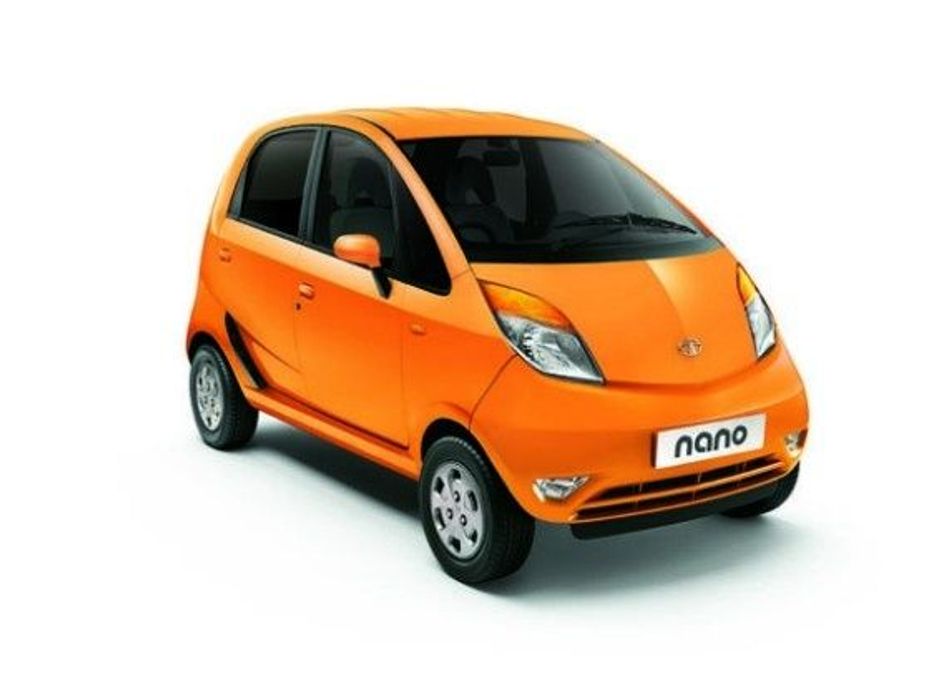
Q). It looks like a car, but feels quite pared down. Is the RE60 a Nano competitor?
This is a four-wheeler built by the world’s largest manufacturer of three-wheelers used primarily as last mile people movers. The engineering is frugal but not at the cost of structural integrity, the thought behind the design is smart but not cocky and the overall tenets to drive home the point of light weight and optimum power-to-weight has resulted in a car which can and will perform adequately as an urban runabout for four with all-weather protection.
Q). What is the basic concept behind the RE60?
A last mile people mover it might be for the commercial aspect of it all, rickshaws and taxis in more explicit terms but there is no denying that it is also built to the emerging new quadricycle norms for basic city commuting in Europe which call for cars of a specific design and strength, high fuel efficiency and ultra low emissions in the very essence of the term, decent performance for four with ease of use and control, all weather protection that is not pared to the bone but more in sync with the A-segment cars. And to top it all, this is a car with very strong fundamentals with all-Indian tech which is already a proven world beater in the two-wheeled sphere.
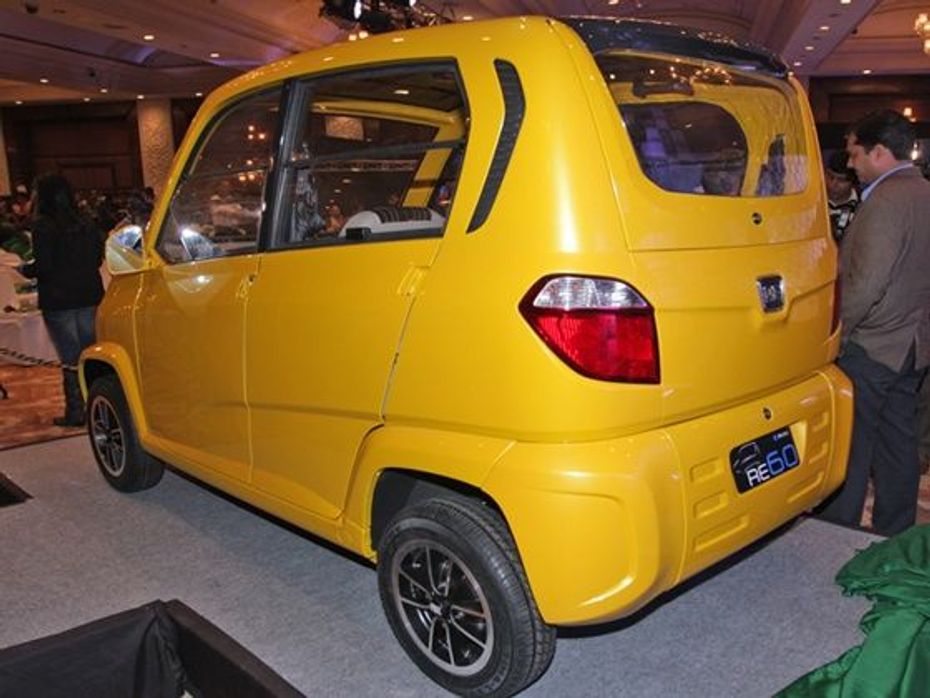
Q). What powers the RE60?
This is the holy grail behind the RE60 and it is just as Rajiv Bajaj intended. The heart of the matter is a brand new from the ground-up powerplant which has been borne out of motorcycle technology. At present the engine displacement is 200cc, is configured as a liquid-cooled single cylinder, overhead cam engine with four valves which is core to the patented DTSi top end architecture (which is also at the heart of all the firm’s Pulsar sports bikes). To top it all, the engine employs a closed loop fuel injection system and in this guise it can be made to develop anything between 16 to 21 bhp depending on the spec ordered. Mind you the overall gearing is key to the intended application and the five-speed gearbox has the bandwidth to make the 17 Nm of torque play the perfect operating tune.
Q). 200cc, liquid-cooled, four-stroke, 15-20bhp - sounds familiar, with a hint at Bajaj Auto's motorcycle endeavours. Are you thinking what I am thinking?
Yes and while I have already spilled the beans on the drivetrain above I will elaborate a bit on the power-to-weight ratio that is the key to the performance of this last mile vehicle in the people mover business. Take the Tata Iris which has a power-to-weight ratio of 16bhp per tonne. The Tata Nano with its 624cc twin-cylinder engine and an all-up kerb weight of 635kg rates at 58bhp/tonne. The present day Bajaj autorickshaws with 12bhp on tap log in at 30bhp/tonne.
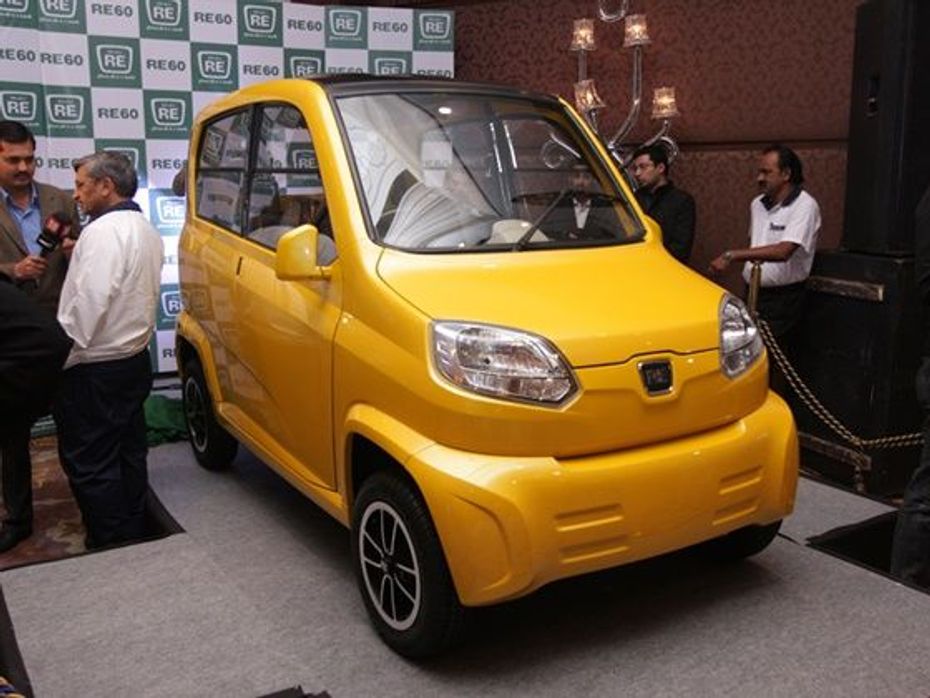
If one factors in the RE60 with 16bhp on tap it equates to 40bhp/tonne and this figure is upped to 50bhp/tonne if the engine spec indicates a 20bhp max output! It is not about outright displacement (or the lack of it) but how the displacement is made to work and this is exploited to the hilt here in the RE60. If one cares to go further, the RE60 with its five-speed gearbox has a better spread to handle the 18Nm of torque and everything is about low and mid-range to deliver that sharp responsive thrust in the 40 to 70 km/h operating band which is meat and dessert to urban mobility.
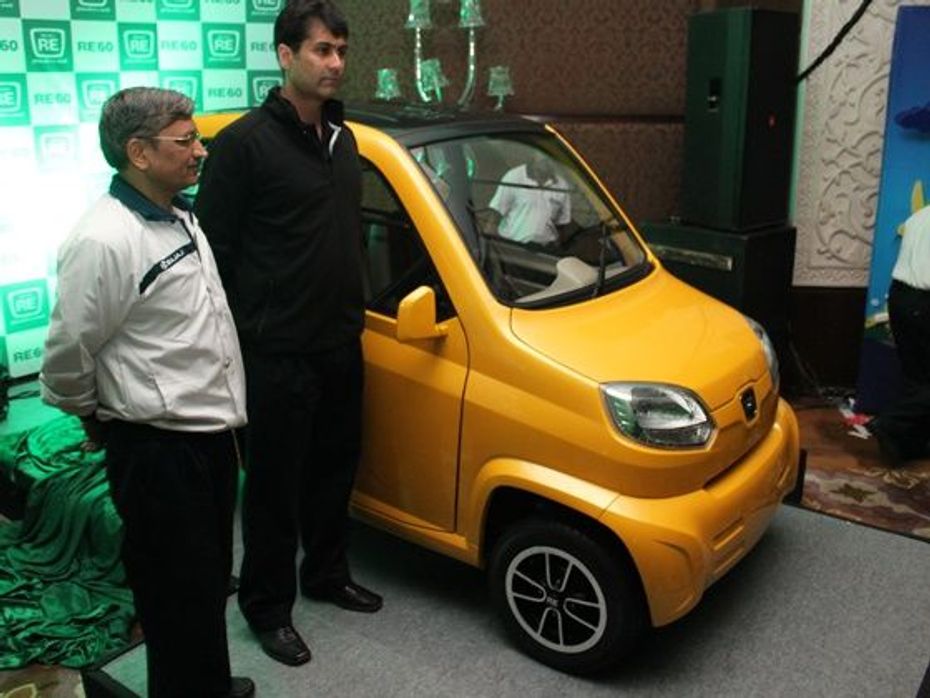
The motorcycle angle is to be brought in here if only to emphasise how significant has been the learning and the advancement of technology via the Pulsar sports bike programme. It is not just about the DTSi top end but also the five-speed transmission, the friction busting innovations across the entire range of Bajaj bikes and also the lessons learnt via the Orbital-inspired two-stroke direct fuel injection engines employed on the RE three-wheelers. Yes this is what Rajiv Bajaj mentioned while making a point about making do with less and when you have the best motorcycle motors in your armoury and use them as the basis to create newer and more robust mills for application as last mile people movers and also as low end but not low tech urban mobility solutions for the masses, one knows that this less is more approach will deliver big.
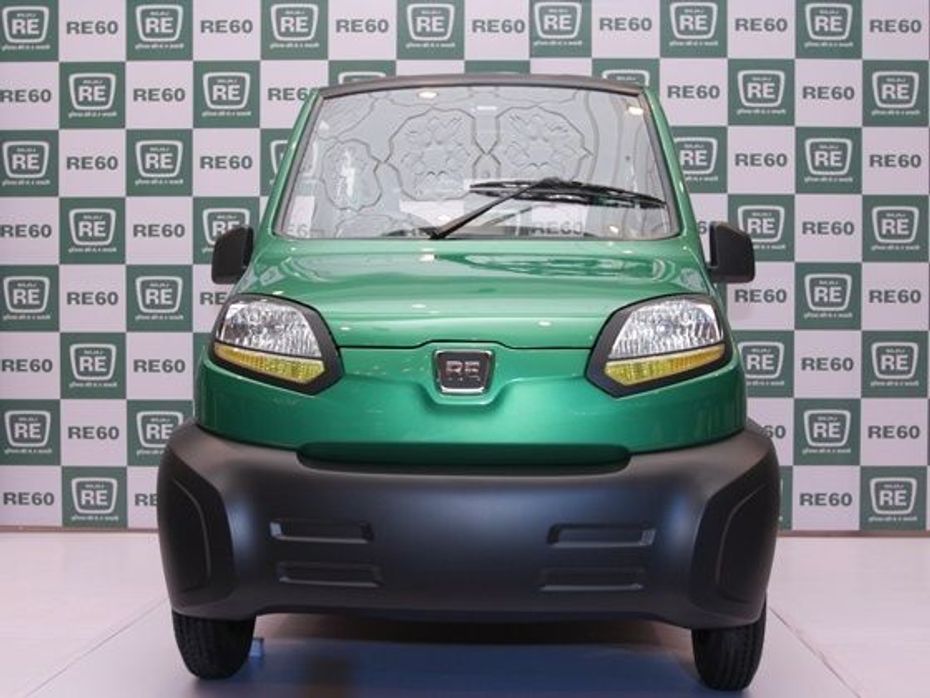
Q). How does the RE60 distinguish itself in terms of technology?
Again I think we have answered quite a deal on this aspect in the earlier two sub-sections but this is a vehicle where the build technology is as important as the drivetrain. The design is key as is the packaging and with a wheelbase of 1925mm and a track dimension of 1140mm, this vehicle has the right approach to a highly manoeuvreable (3.5 metres is the turning circle radius) vehicle but at the same time without compromising on stability and ride plus handling. The bodywork is a key combination of sheet metal and plastic (doors and roof) but it is not so simple as that.

There is a method to the madness and this is where Bajaj Auto’s famed Stars Ahead R&D team has even beaten Gordon Murray’s much acclaimed iStream design and manufacturing process. The basis of the RE60 is an all-monocoque floorpan with the entire side framework (A-pillar onwards to the C-pillar) being a bolt-on affair. While this might be anathema in this day and age the fact that Bajaj Auto sees a large export potential for the RE60 means getting the entire kit in a flat, easy-to-transport package is also one where overall costs can be cut down. Same applies to transport within the country as well. Of course using ABS for certain body panels and the right approach to sheet metal without compromising safety has made for an all up weight of 400kg for the RE60 and this works out brilliantly on so many fronts and not just power-to-weight as we shall see going forward.
Take the suspension and here as well the RE60 breaks new ground for last mile people movers and the quadricycle set with a completely new interpretation of twin wishbone front suspension allied to a multi-link set-up using coil spring and damper units at the rear. Insulating the whole drivetrain (which is mounted just ahead of the rear wheels) to deliver very low NVH is another aspect to the RE60 and this is an area which will impress those wanting a low cost small and efficient urban mobility solution for personal usage.
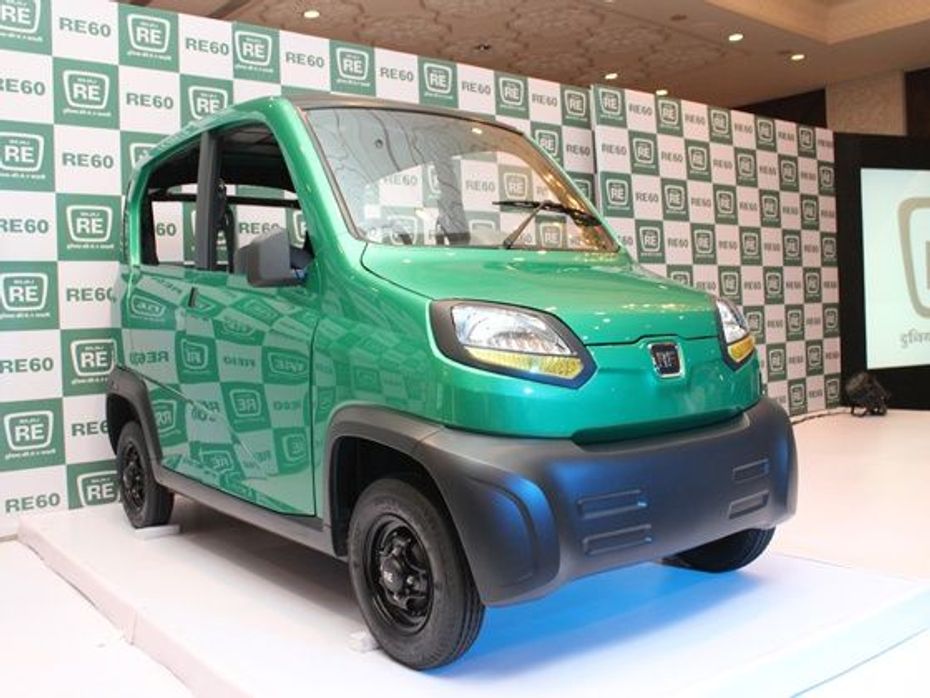
Q). Does the RE60 make sense as a city vehicle, with a top speed of just 70 km/h?
Again I would like to emphasise that absolute top speed is not the end all and be all for most cars in this country, even the high end ones mind you and with this being such a focused approach to urban mobility given its last mile people moving ability, 70-75km/h is par for the course. Even the Nano with its 104km/h top end hardly ever gets to operate at this speed in its intended intra-city operation and so does a Ferrari or a BMW. I think the key is how responsive the torque thrust is from low crawling speeds to good cruising ability and this is where the performance would be adequate.
Having seen how strong the Pulsar and Discover engines are in this regard, expect nothing less than the same for this engine. Further more let us not forget one thing else. This is also Bajaj Auto’s first liquid cooled motor (that is if you discount the KTM Duke mills from 125cc to 200cc which have been developed and manufactured here in Pune, India by Bajaj Auto) and this helps keep operating temperatures constant and consistent which is also a very important thing in an all-enclosed space.
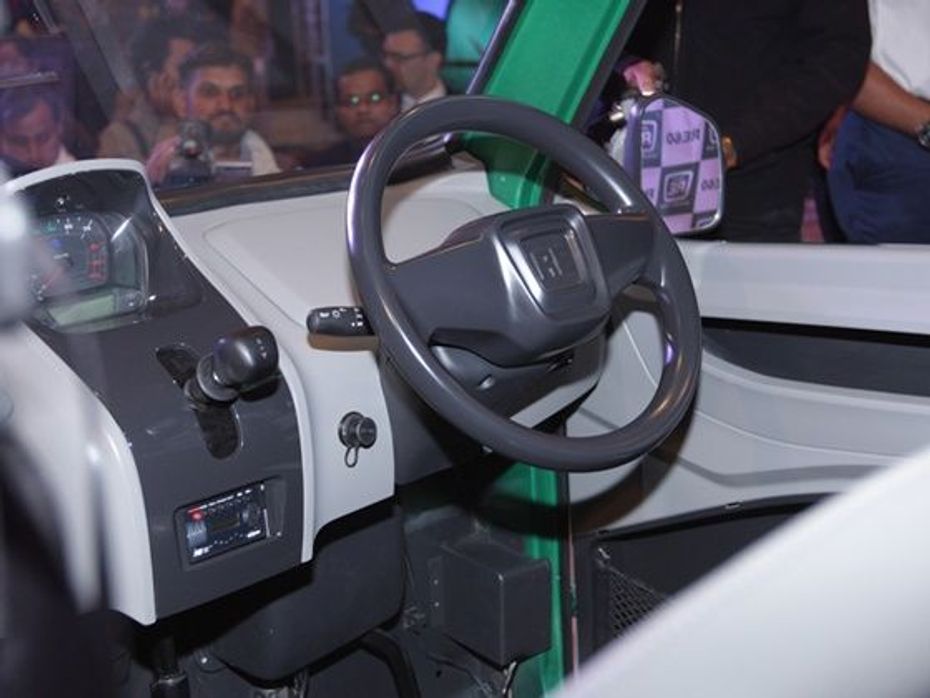
Q). Kitna deti hai?
The sense and the sensibility which one speaks about the RE60 is to be found in its operating performance allied to its high fuel efficiency and its even lower emission footprints. We have already discussed performance above but then with its light weight construction and the overall gearing to make the wide torque spread talk big, the RE60 will answer tellingly to one and all. In fact this will be the first all Indian car as also the world’s first genuine 3-litre car (three litres of fuel consumed per 100km distance traversed) when it gets into production from later this year. Even the Nano couldn’t match that nor does any other car with the expected price point the RE60 will come at. Sure there are super exotic specials capable of being adjudged two-litre cars (two litres to go 100km) but then they cost as much as a Lamborghini and are more indicative of technology and design demonstrators. Here in fact the RE60 is leagues ahead of everyone. rings us then to another very important factor in the present day and age – saving the environment!
While one might think it rich that Bajaj Auto is speaking this language when its earlier two-stroke scooters were anything but, the fact remains that it was not the scooters but the overall two-stroke technology that didn’t match up. Getting back to business in the here and now with the RE60, Rajiv Bajaj and his team have spared no effort in spearheading an all new and very well competition to go light without excess use of material, be it in the overall vehicle itself or in the manufacturing process. Going lean in overall carbon dioxide emissions was another parameter targeted from the very first concept stage itself and the RE60 will be the world’s cleanest four-wheeler with a CO2 emission of 60grams per kilometer! To put that in perspective, many of our present day city cars like the i10 and the Brio and the A-Star spew in excess of 110g/km of CO2 while super exotic minis in Europe at about Rs 15 to 18 lakhs dip slightly below the 100g/km mark. Now if Sunita Narain or other well intentioned rabble rousers do get on to say anything about it, I am sure that they will be doing their own cause a great disservice and I say this with all humility at my disposal.
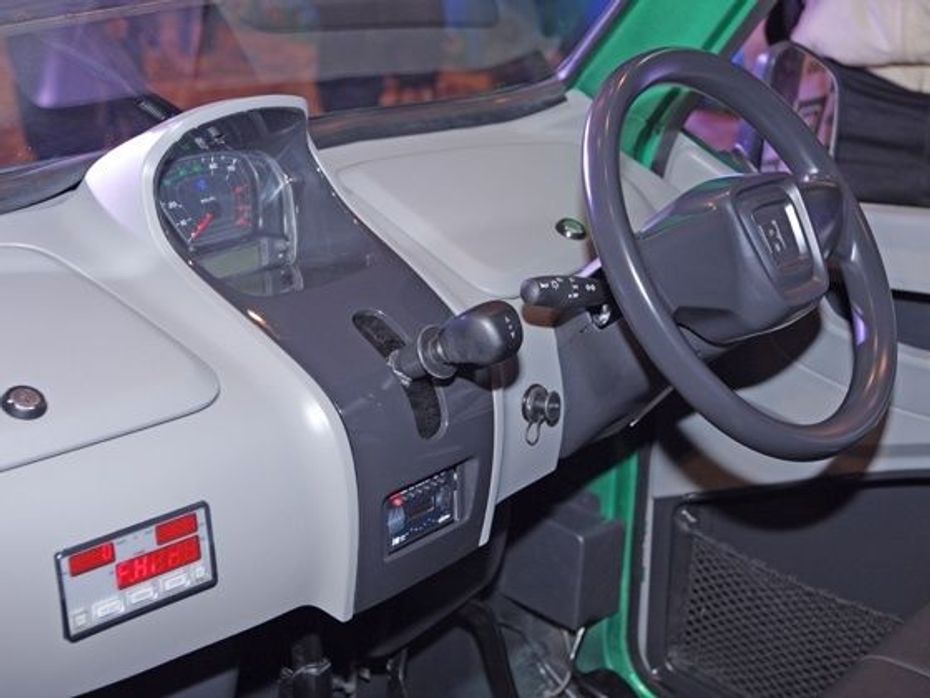
Q). What are the convenience features built into the RE60?
First off it is very easy to get in and out and to slide behind the wheel and look all around makes for a pretty compelling start. All round visibility is good and that tall boy stance has its virtues of liberating a load of usable space for the four occupants in the cabin. Then there is the stylishly simple dashboard with the motorcycle-inspired instrument cluster placed centrally. If that is not all, the centrally mounted gear shifter is another detail which I haven’t elaborated as yet.
The five-speed gearbox isn’t operated with the conventional H-pattern shift but there is the sequential type crasher shift where you keep on moving the stick forward for every cog you want to shift up and the other way around when you want to downshift. It is unique but not unknown elsewhere in the automobile world but Bajaj Auto’s engineering team led by that great engineer Joseph Abraham has simply tweaked the ante and come up with a simple yet highly enjoyable solution. Steering gear is light and there is no power assist and the pedals are light to the touch.
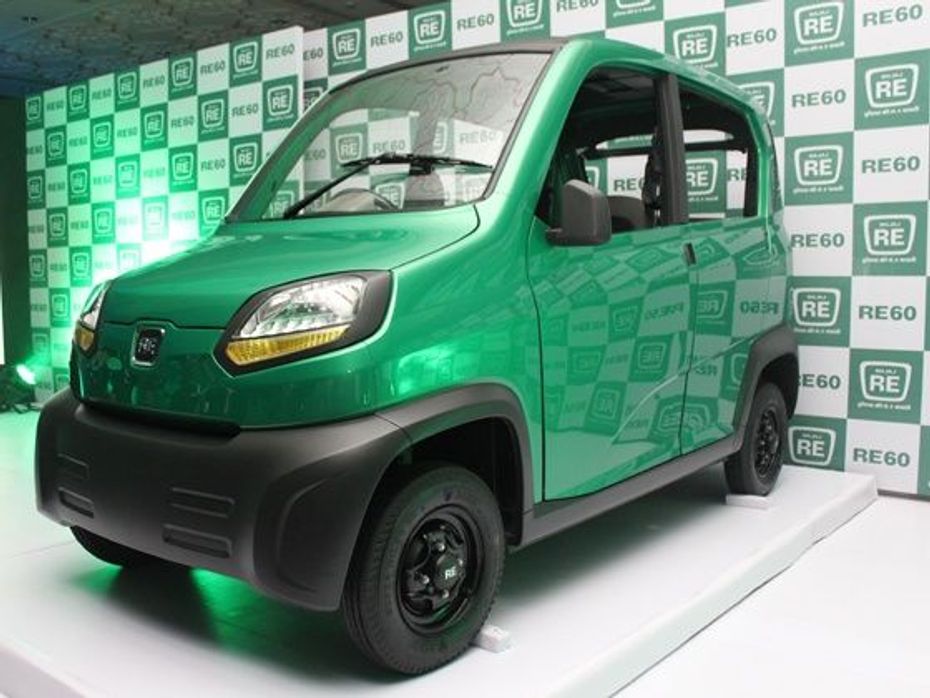
Q). It looks quirky and a little strange. What are your views on its design?
Let’s put it that the design is distinctive but then trying to cater to two very different segments of society mean that one has to be sensible in what the vehicle has to do with form following function as well as the other way around! The basic shape conveys a feeling of robust build and the stance is very solidly planted on terra firma. The wheels might be skinny but then they have to perform within the vehicle’s performance spectrum. The large single wiper on the windscreen does stick out jarringly but overall I can say that the final design will sort out any ungainly edges to a certain degree but overall expect the design to stay the course as at the RE60 reveal.
Must share a few bits about the design process which earlier to have international designers doing the project. However they couldn’t get the essence of what Rajiv Bajaj and Joseph Abraham wanted. The design was then taken in house and with Edgar Heinrich’s team working on this, they translated Rajiv and Joseph’s thoughts into the creation one saw revealed today. There are a few details which would get further spruced up but overall the design is already 90 per cent signed off for production.
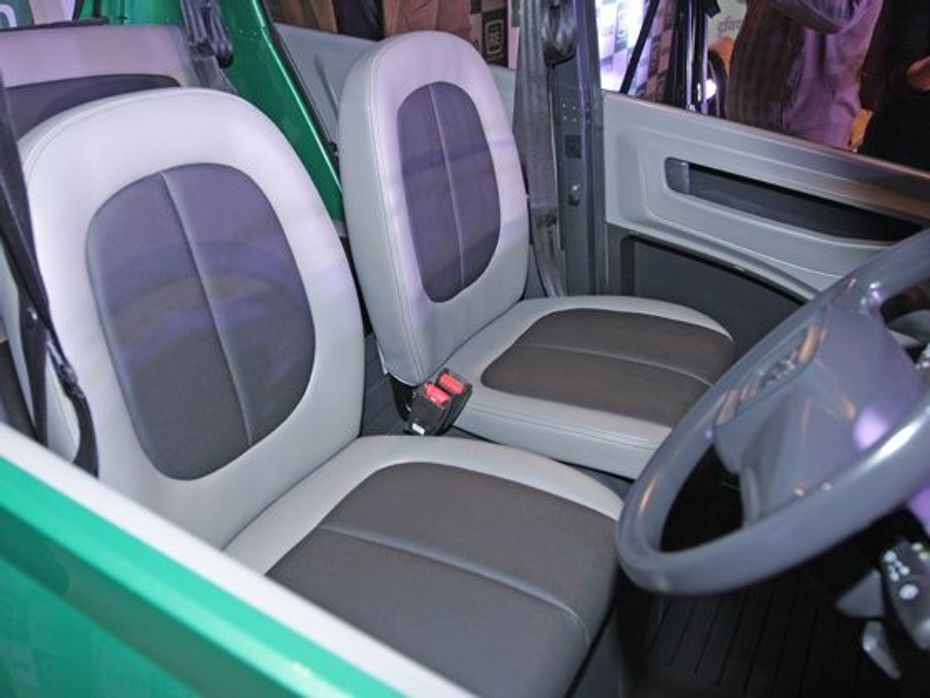
Q). What about the occupant space? How many people can it seat comfortably?
Seeing how the Tata Nano rewrote the rules on overall vehicle packaging and cabin space, the RE60 further pushes the envelope on this aspect. The tall boy approach helps by giving a 44-litre boot space but then this was one of the findings from the over 2000 rickshaw drivers who were asked their views on a modern day last mile people mover. They said that they wanted space behind the rear seat and you have a decent sized space but then there is useable under seat storage space below the front seats to the tune of an additional 95 litres, yes this is no typo while up front under the bonnet you can squeeze in another 77-litres of luggage by volume.
Occupant space is brilliant for four including the driver of course though three could be accommodated on the rear bench in a cinch. Last mile vehicles never had it so good but then for a well done high efficiency urban mobility solution this works just as well!
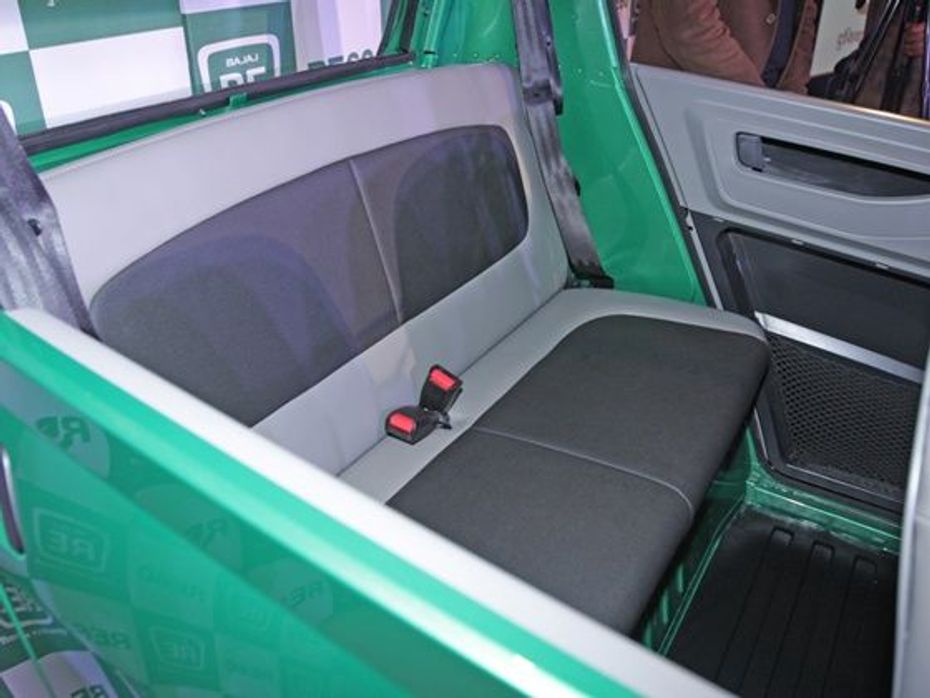
Q). And where do we keep the luggage?
I think the luggage bit has already been addressed up front but on this count also I might have to say that the less is more approach would have to be taken by the occupants in carrying tiny packages! This is an intra-city vehicle and not an all-up automobile but the luggage space is pretty good for its class of vehicle.
Q). It has a strange stance and tiny wheels. Will it be safe?
Refer to the section on design where I addressed this very trait and while the tallish glazed section is apparent and the wheels seem pretty skinny, the wheelbase to track ratio is key to the safety and stability of the vehicle as also the 37:63 per cent weight distribution front to rear. The basic last mile people mover commercial application will ride on 10-inch dia 6PR tyres (as against the present day RE three-wheelers which make do with 8.0-inch wheels).
The urban personal mobility version will get 12-inch radials of size 135 x 70 and this should be more than adequate to deal with traction, grip and stability, performance as well as the right rolling resistance to eke out the high fuel efficiency. The suspension componentry seems pretty sorted out but with overall performance tailored for our door-handle to door-handle traffic scenarios, the car is pretty safe for its intended application. Of course if you go overboard then you are inviting trouble.

Q). Will this vehicle flood Indian roads?
Let’s refer to the analogy used by Rajiv Bajaj. He says that there are over ten million three-wheeled Bajaj autorickshaws on Indian roads. If the move is made through incentives and the like to get existing last mile people movers to upgrade to newer, safer and cleaner vehicles, one can expect great things on the replacement front. Of course pricing will be critical but remember this is Bajaj Auto doing the talking and experience has shown that it walks the talk just as well on the pricing front. However, it is a vehicle where Bajaj Auto sees great relevance in the export markets and in fact Sri Lanka would be the first to get this vehicle sometime in the third-quarter of 2012.
With over 500,000 three-wheelers exported in calendar 2011, this figure shows great promise for the all new RE60, which should slide into prominence as a better last mile people mover. In India the virtue that will help the RE60 garner space in the urban personal mobility space would be about its ease of use, its high fuel efficiency, its absolutely smashing carbon dioxide emission levels, its space proposition, its cost to quality mantra and its small compact footprint. Of course its distinctive style will help as well I am sure but once one sees critical mass out there on the roads (with none of the marketing arrogance which prevented the Nano from going places), I am sure the RE60 is the biggest thing on the automotive scene this year globally!
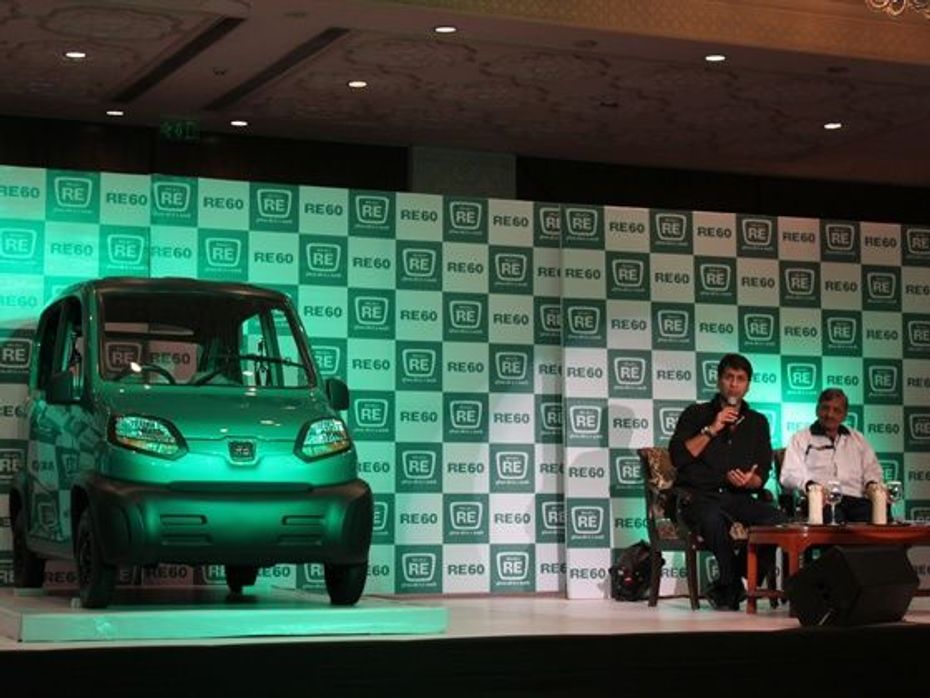
Q). Public transport is usually Government sanctions, regulations and support. What would prompt authorities to encourage the RE60?
Yes this is a tricky one but then if there is political will there is surely a way as well. When Sheila Dixit, the chief minister of Delhi gave the sanction to provide incentives to petrol and diesel engine autorickshaws to shift to the special CNG-fuelled Bajaj RE's, the move was a milestone in pushing for a cleaner atmosphere in public transport. The RE60 will also come in a CNG-fuelled version, while even an LPG-fuelled version is under development. The CNG and LPG tanks would then be housed under the front seats (safe and snug as in a Honda City, Jazz or Brio) but then they would be even more cleaner, frugal and cost effective. There is a different dynamic when it comes to public transport where the vehicle is a revenue generator and with high fuel efficiency translating into more money being taken home to the family and nothing works better to convince and convert than more money in the pocket.
Q). Would this vehicle be legitimate for use in export markets? Would it be sold as a vehicle for private use or one with commercial aspirations?
There is a vast overseas market for the RE60 and it is not just limited to the evolving under-developed ones in Africa and South America. Think well equipped versions for Spain, Italy, France and Portugal, nations that are reeling in these economically stretched times. Also it is here in the mature markets where clean and green is as big a thing as is high efficiency. Overall, I see this as one of the biggest game changers, bigger even than the Nano because with the new Euro L7E vehicle regs for quadricycles, urban mobility solutions specify just this type of a vehicle. No wonder that Renault-Nissan combine is so keen for the RE60 to match up to their expectations! And when you think of areas in Africa and South America where public transport is dismal, the RE60 is the ideal solution.

Q). When can we expect a cargo version of the RE60?
Not in a million years! Well jokes aside, the RE series is all about the last mile people mover category but the platform of the RE60 has been configured to take to small sub-one-tonne load carriers as well.
However, the shape and the form will be completely different from that of the RE60.
Q). What about a diesel powered variant?
Don’t bet on that either because NVH and refinement are major considerations as well for both segments the RE60 intends to cater to. With the cost to performance proposition also being so very important and already the petrol version making a clear case for itself, I think diesel will be very difficult to pencil in. Is there a message or a lead in for others in the petrol or diesel debate?
Q). Is this all technology or avant garde idea that makes sense today, or will it grow on people in the future?
This is the embodiment of using available technology in a smart manner to derive great results. In fact the RE60 is more than the sum of its parts. Rajiv Bajaj mentioned that the RE60 is “an optimized solution for intra-city transport, designed keeping in mind intra-city duty cycles and safety requirements.”
I see the RE60 succeeding in both avatars and most importantly it will do much to keep many engrossed and enthused in it. No one gave an ounce of credence when Bajaj made the daring move to the Pulsar sports bike, just about no one. How wrong they were proved! I see the RE60 in this very vein and lest I be branded as a doomsayer to the two-wheeled brigade, let me say that the word on a spanking new range of Pulsars is just right round the corner so don’t fret. However this is an idea at the right time.
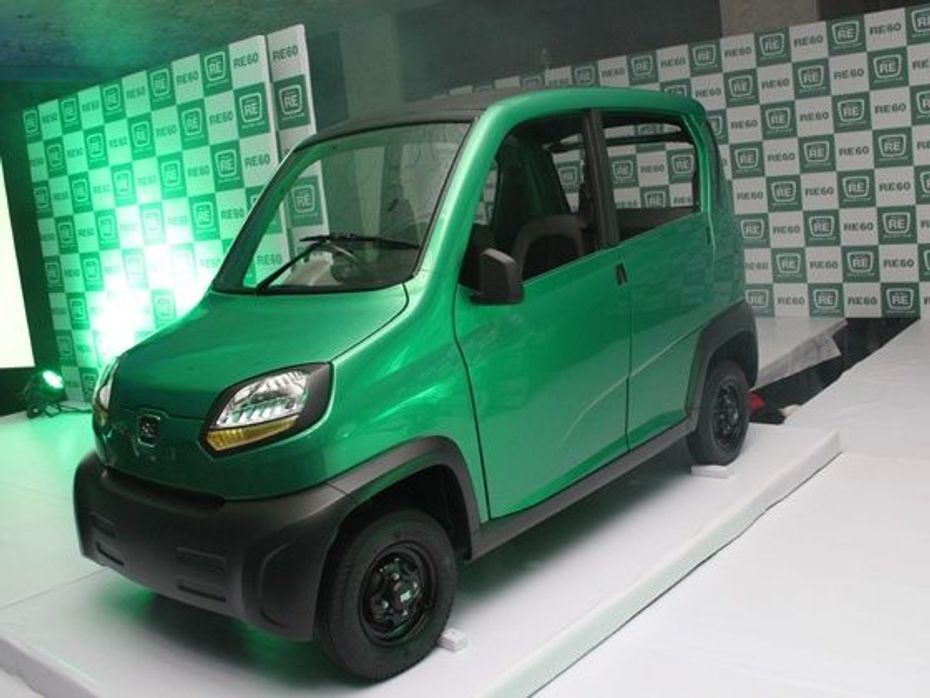
Q). Final word: This is a four-wheeler made by a motorcycle company. How do you think the market will perceive this?
The big thing is that this vehicle works on the one simple seducing element of being frugal on gas. Nothing works better on this aspect, especially for basic commuting by the masses. From there build on the high profile of the very successful Pulsar series, the space-price-performance-quality proposition and the project acquires immense potential.
The onus then is about the message to the masses, the buying experience and ease thereof, the service intervals and the quality of after sales service. KISS is what Bajaj intends to adopt (both figuratively and literally when you unravel it stands for the Keep It Simple Silly method of creating a super concept) and when you get something to love and adore I don’t think anyone can go wrong.
BAJAJ RE60 : TECHNICAL SPECIFICATIONS
|
Displacement |
200cc |
|
Engine type |
Single cylinder, four-stroke, Water Cooled, 4 Valve engine with a closed loop fuel injection system, DTSi |
|
Power |
20 hp (claimed) |
|
Torque |
17 Nm |
|
CO2 Emissions |
60gm/km |
|
Fuel efficiency |
35 kmpl (claimed) |
|
Maximum Speed |
70 km/h |
|
Kerb Weight |
400 kg |
|
Turning circle radius |
3.5 meters |
|
Wheelbase |
1925 mm |
|
Overall length |
2752 mm |
|
Overall width |
1312 mm |
|
Overall height |
1650 mm |
|
Track |
1140 mm |
|
Seating capacity |
2+2 or 1+3 |
|
Boot space |
44 litre |
|
Underseat storage space |
95 litres (below front seat) |
|
Suspension (F/R) |
MacPherson Strut / Coil Spring multi-link setup |
|
Brakes (F/R): |
Drum/Drum |
|
Weight Distribution (F/R) |
37% / 63% |
|
Fuel Tank (full capacity) |
350 km range |

Renault Extends Standard Warranty On Kwid, Triber, And Kiger To 3...

Hyundai Exter: An Year Long Ownership Experience That Left Us Wanting...

Is The Kia Syros More Compelling Than The Best-selling Hyundai Creta?

Auto Expo 2025 - All You Want To Know About The Hottest Auto Show!

Hyundai Creta Electric REVEALED Ahead Of Auto Expo 2025! Here’s...

Upcoming Maruti Suzuki Cars Expected In 2025: e Vitara, Baleno...

Here Is The List Of All Tata Cars Likely To Be Launched In 2025

Mahindra BE 6 Launched: Price For The Top-spec Variant Is Out!

Upcoming Mahindra Cars Expected in 2025: XUV 4XO, Thar Facelift, BE...
India's largest automotive community
 Vayve Mobility Eva
Rs. 3.25 Lakh
Vayve Mobility Eva
Rs. 3.25 Lakh
 BMW X3
Rs. 75.80 Lakh
BMW X3
Rs. 75.80 Lakh
 Hyundai Creta Electric
Rs. 17.99 Lakh
Hyundai Creta Electric
Rs. 17.99 Lakh
 Lotus Emira
Rs. 3.22 Crore
Lotus Emira
Rs. 3.22 Crore
 Lotus Emeya
Rs. 2.33 Crore
Lotus Emeya
Rs. 2.33 Crore